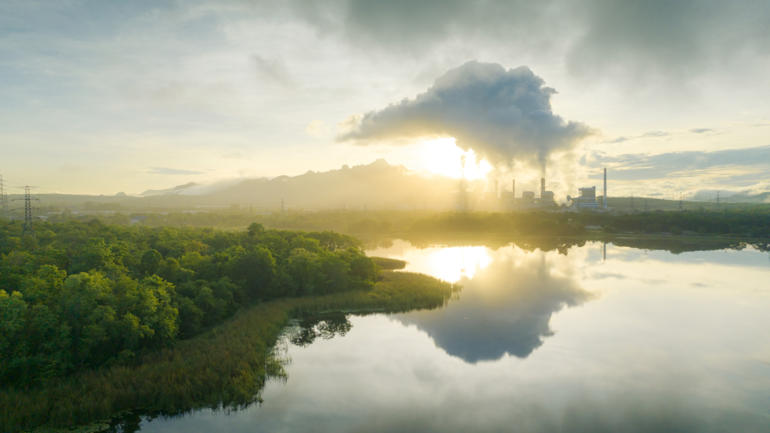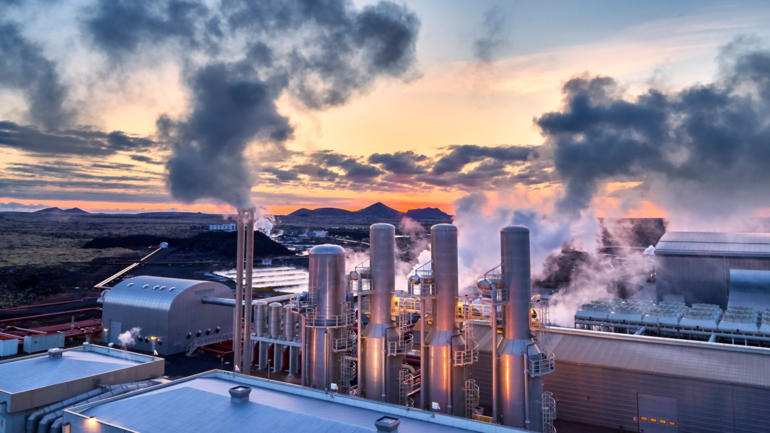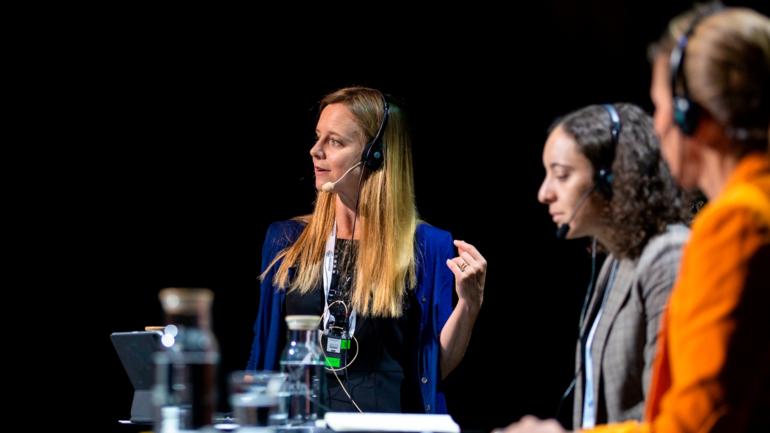In April 2020, Shell announced their new plans to become a net-zero emissions energy business by 2050 or sooner. The new commitment aligns Shell’s climate ambition with the global goal to limit the average temperature rise to 1.5 °C in line with achieving the Paris Agreement goal on climate change.
To hear more about Shell’s climate commitment, the challenges they face and how they plan to decarbonize their emissions across Scopes 1,2 and 3, we spoke with Harry Brekelmans, Projects & Technology Director at Shell to find out more.
Shell recently made a bold announcement about its ambitions to become a net-zero emissions energy business by 2050. We know you are also managing the crisis created by COVID-19. Why this timing?
The timing is very important for Shell. When the world is facing a great period of uncertainty, it is critical to look at the shorter term, but at the same time to not lose sight of the longer term. Shell’s immediate priorities continue to be the wellbeing and safety of our people, taking care of our customers and supporting the communities where we operate, and harnessing the overall continuity and resilience of our operations. We are doing all we can to assist the global response to COVID-19, but this does not mean that we have lost our focus on the need to address climate change, and on society’s drive to transition to a lower-carbon energy future and meet the goals of the Paris Agreement. We are determined to play our part, no matter what challenges we face.
What have you announced?
Shell has announced a new ambition to be a net-zero emissions energy business by 2050, or sooner if possible.
We will work towards this ambition in three ways, in step with society’s progress towards the goals of the Paris Agreement:
- We aim to be net-zero on all the emissions from the manufacture of all our products. These are the so-called Scope 1 and 2 emissions, and they include all of the emissions associated with manufacturing and bringing Shell’s energy and non-energy products to the market.
- We aim to reduce the carbon intensity of the energy products we sell. This is what we call our Net Carbon Footprint ambition, and it includes all the emissions from the life cycle of each of our energy products, or Scope 3: from production to processing, to transportation and through to final use. In April, we significantly raised our Net Carbon Footprint ambition so that it is in step with the large sections of society that want to achieve a 1.5° C future. Our long-term ambition is now to reduce the Net Carbon Footprint of the energy products we sell by 65% by 2050 (up from 50%); and our medium-term ambition is to reduce the Net Carbon Footprint of our energy products 30% by 2035 (up from 20%) as compared to 2016.
- Finally, as a business that supplies energy, we will work with our customers to help them decarbonize. And for those customers who still have emissions as they near 2050, we will work ever more intensively with them to help them find a way to mitigate those emissions.
In tackling climate change, the focus is increasingly on limiting the global temperature rise to 1.5°. Shell supports this ambition. For society to achieve a 1.5° C future, the world is likely to need to stop adding to the stock of greenhouse gases in the atmosphere – a state known as net-zero emissions – by around 2060. But those who can move faster, must move faster – advanced parts of the world are likely to need to reach that point by 2050. Shell recognizes that it stands within a section of society that needs to move faster. Hence this new ambition.
As co-chair of WBCSD’s Climate & Energy Program board, how do you think WBCSD can best help companies like yours reach net-zero?
I think the strength that WBCSD has is that it is a global organization led by the CEOs and senior executives of more than 200 leading businesses that work together to accelerate the transition to a sustainable world. Member companies represent both the supply and demand side of the energy system and reach a wide range of customers. WBCSD can best help businesses like ours reach net-zero by bringing this network together to make the most of our strengths and share our collective knowledge under the its new cross-cutting climate action project SOS 1.5. Transforming businesses to reach net-zero emissions is extremely challenging. Companies need to work together with experts to overcome the major challenges and decarbonize faster and at scale. SOS 1.5’s pathfinders bring companies and experts together to provide sector-specific deepdives and tailored roadmaps to help all companies achieve ambitious climate action. WBCSD also collaborates with a wide range of NGOs, foundations, governments and UN bodies, bringing the voice of business to key global debates.
What do you see will be the biggest challenges to reaching net zero?
Shell aims to help support society’s journey to a net-zero-carbon economy – to innovate, to invest, to produce new products and help create new markets. But different parts of the world will move at different speeds – and face many different challenges. And both energy demand and energy supply must evolve together.
To achieve our overarching ambition to be a net-zero emissions energy business by 2050, we not only need to reduce our own emissions, we must help our customers decarbonize. This includes working with broad coalitions of businesses, governments and other parties – sector by sector – to help identify and enable viable decarbonization pathways for each sector.
This is going to take a lot of work. It will not be easy. Some of the necessary technologies are far from commercial viability. Which is why we feel that our efforts via sectoral initiatives that address Scope 1, 2 and 3 emissions across industrial and energy value chains are so important. We want to help develop sectoral roadmaps to ‘net zero’, with energy users and suppliers both taking concrete actions towards this future, enabled by a supportive policy environment.
In short, we cannot do this alone. And Shell’s business plans today will not get us to where we want to be. Our plans need to change in step with the movement towards a net-zero emissions economy within society and among Shell’s customers. We expect to pivot, over time, towards serving the businesses and the sectors that, by 2050, reach net-zero emissions themselves.
How will SOS 1.5 help you to overcome these challenges to reaching net-zero?
SOS 1.5 is a cross-sectorial framework to help companies accelerate their – and their sectors and value chain’s – journey to net-zero emissions. WBCSD’s Roadmap provides key actions and a step-by-step guide for all companies to design and implement their net-zero journeys. But perhaps even more crucial for Shell, SOS 1.5’s pathfinders bring companies and experts together to overcome critical challenges such as mobilizing the value chain to decarbonize Scope 3 emissions; improving carbon reporting measures; overcoming policy and financial barriers to green hydrogen, carbon capture and storage technologies and scaling natural climate solutions to lower emissions; all while developing innovative business models to deploy these essential technologies to lower emissions at scale. No business can reach net-zero alone and we need to work together to unlock the critical levers to transform energy demand and supply together and scale decarbonizing impacts across the economy.
Other companies have made announcements to achieve zero emissions. What do you think about that?
We are very pleased about this. Such moves help the entire energy sector and will help the world. Shell was the first oil and gas company to include emissions associated with the use of the energy products that we sell in plans related to climate change, and we’re happy to see similar approaches being followed by others. Others in the sector announcing climate ambitions is both good for the environment and the right thing to do. Since we set out our Net Carbon Footprint ambition in 2017, many others have come forward and we welcome this each time. No single company, government nor organization can achieve what will be required on its own. Our new ambition builds on the 2018 joint statement between Shell and Climate Action 100+.
How did you arrive at your new overarching climate ambition and revised Net Carbon Footprint ambition? Are these underpinned by a clear view on how your portfolio will have to look in 2035 and 2050?
Shell’s ambition is calibrated using scenarios taken from a database developed for the IPCC Special Report on Global Warming of 1.5°C (SR 1.5). These scenarios point towards a need for the world to reach net-zero emissions in the second half of this century. While some parts of the world may take longer to get to that goal, many economies will need to act faster.
Similarly, the energy-mix used across the world will change at different speeds. Shell has used a range of IPCC 1.5°C scenarios to arrive at the aspired level of reduction in the Net Carbon Footprint of the energy products we sell, and to set us on the right pathway to achieving our net-zero emissions ambition.
Shell’s current operating plans and budgets do not reflect our ambition, and it is difficult to predict the exact portfolio we will have in 2035 or 2050. What we can say is that we anticipate selling increasing amounts of lower-carbon-intensity energy products such as renewable electricity, biofuels and hydrogen as we move towards our ambition. This will fundamentally reshape Shell over the next 30 years – and we intend to outline some first steps on how our portfolio could change later this year.
What’s in scope for net-zero emissions on your own operations?
Our ambition to be net-zero on all the emissions from the manufacturing of all our products, including non-energy products, by 2050 if not sooner, includes the Scope 1 and 2 emissions in absolute terms associated with operations under direct Shell control. This includes the direct greenhouse gas emissions from our assets and the indirect emissions from purchased energy, e.g. the emissions associated with the generation of purchased electricity for use in our operations. For further details on Shell’s Scope 1 and 2 emissions see the Sustainability reporting and performance website.
Some of your peers include net-zero absolute CO2 from Scope 3; how can they do it and not you?
Shell’s ambition includes helping our customers to reduce the emissions from the use of our energy products (Scope 3) to net-zero by 2050 or sooner, if possible. As we get closer to 2050, we will work ever more intensively with customers who still have emissions they have not fully mitigated. The answer may be through actions they take themselves, or Shell may agree to find a way to mitigate those emissions on the customers’ behalf. Together, we aim to help advance the policies, technologies and consumer choices needed towards a net-zero emissions economy.
Will you eliminate your absolute emissions if you are to meet your ambition?
Our ambition is to significantly reduce our absolute emissions, as well as invest in emissions mitigation using carbon sinks, such as reforestation or carbon capture and storage. Carbon sinks are essential to help deliver required emissions reductions in timescale to match global climate ambitions. They are one of the various tools Shell will use to meet its ambition to become a net-zero energy business.
What is going to be your next carbon announcement?
We continue to move at pace with society. When our Net Carbon Footprint ambition was launched in 2017, it was calibrated to be in step with a society working towards the Paris Agreement goal of a well-below 2° Celsius future. Today Shell’s ambition is to be in step with a society working towards the goal of a 1.5° Celsius future by reaching net zero carbon emissions by 2050. We aim to stay in step with society. We aim to provide regular updates and details on how our portfolio and outlook is evolving to deliver on our updated ambition.
How do you see the transition to net-zero moving forward?
Although the transition to a low-carbon future comes at a cost, the total amount is unclear. What is clear is that the longer countries delay implementing plans to cut emissions, the more expensive it will get. Governments, industry and consumers alike will have to bear the costs. The quicker this is done, the lower the global temperature rise will be. Governments, businesses and society must all play their part.








